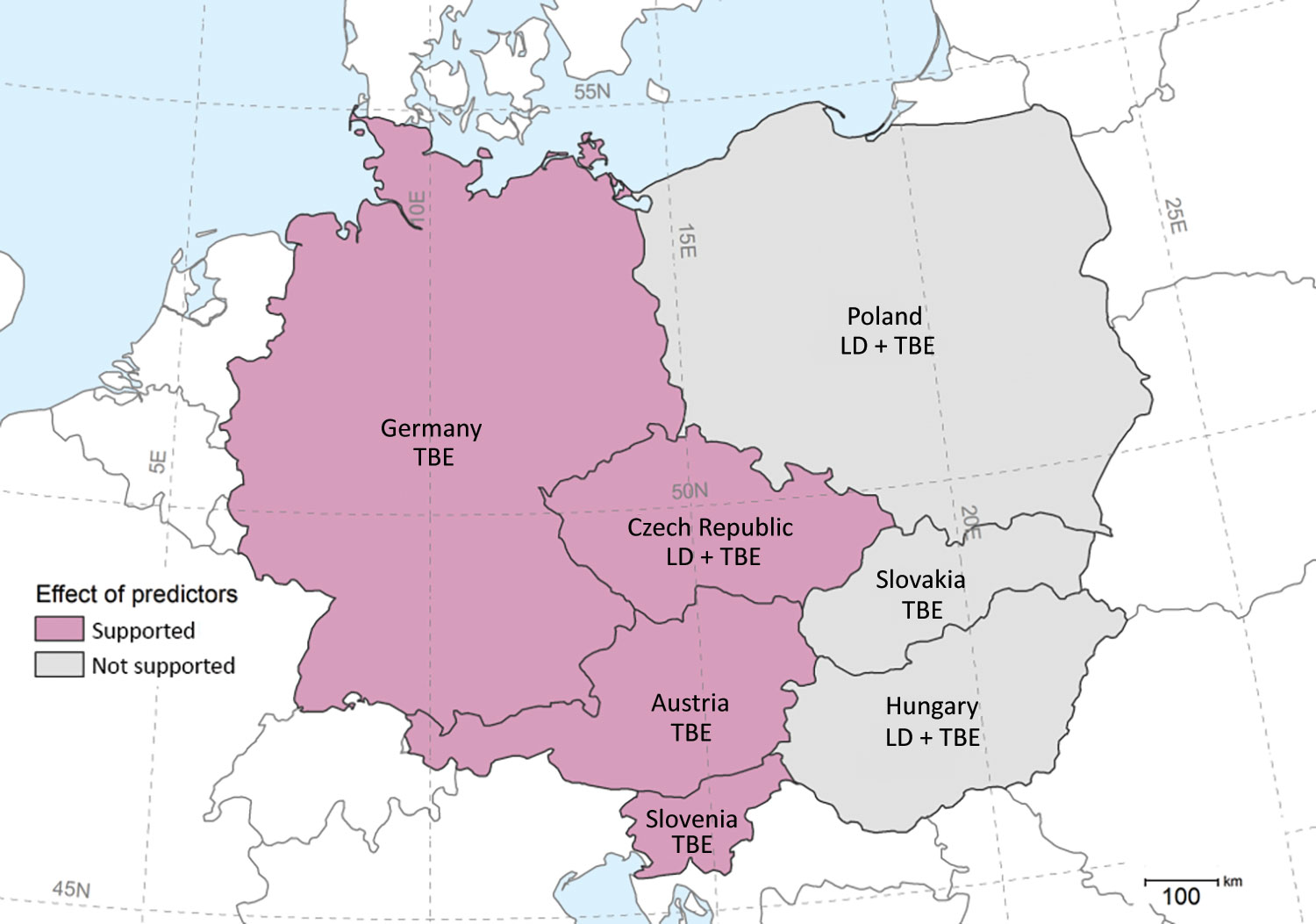Volume 25, Number 9—September 2019
Dispatch
Rodent Host Abundance and Climate Variability as Predictors of Tickborne Disease Risk 1 Year in Advance
Figure 1

Figure 1. Countries in central Europe where Lyme disease and tickborne encephalitis incidence was analyzed relative to the common vole abundances from the Czech Republic and climate indices, 2000–2017, and where we found evidence for these external predictors. LD, Lyme disease; TBE, tickborne encephalitis.
Page created: August 21, 2019
Page updated: August 21, 2019
Page reviewed: August 21, 2019
The conclusions, findings, and opinions expressed by authors contributing to this journal do not necessarily reflect the official position of the U.S. Department of Health and Human Services, the Public Health Service, the Centers for Disease Control and Prevention, or the authors' affiliated institutions. Use of trade names is for identification only and does not imply endorsement by any of the groups named above.